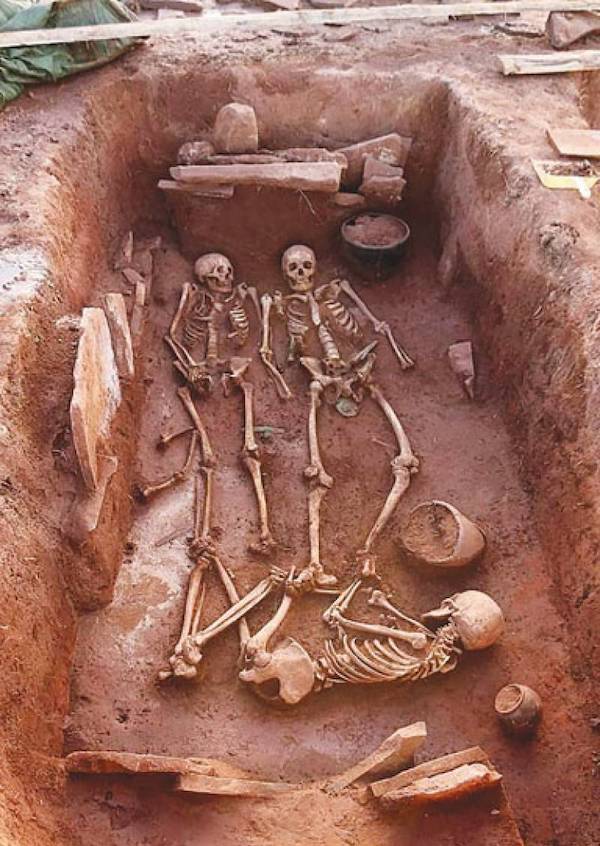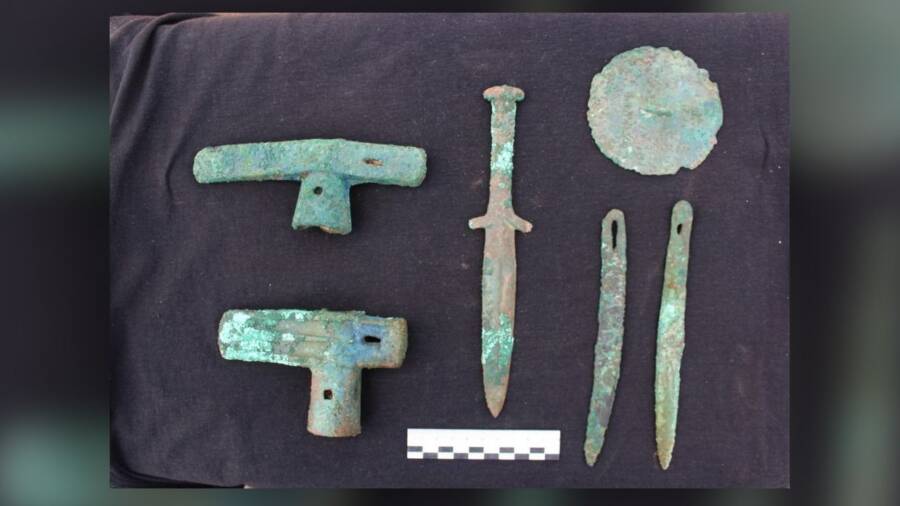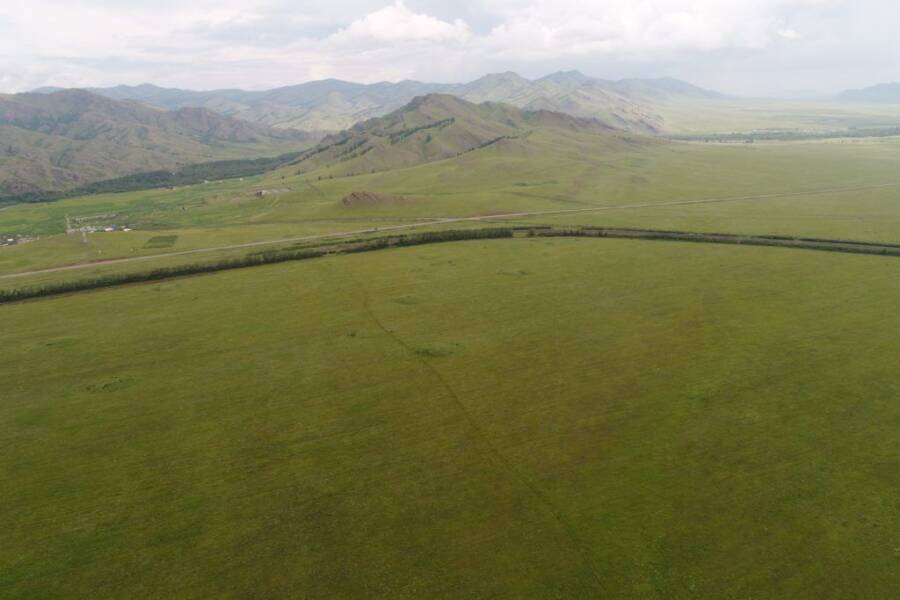Ancient Siberian grave holds ‘warrior woman’ and huge weapons stash
Archaeologists in Siberia have unearthed a 2,500-year-old grave holding the remains of four people from the ancient Tagar culture — including two warriors, a male and female — and a stash of their metal weaponry.
The experts from the Siberian Branch of the Russian Academy of Sciences have yet to determine a clear cause of death. They’re currently theorizing that illness may have sealed the fate of these Scythian warriors, while the uncovered artifacts are just as intriguing.
From bronze daggers, knives, and several axes to bronze mirrors and a comb made from an animal horn — the excavation has proven invaluable.
As is often the case with discoveries such as this, the dig site in southern Khakassia, Siberia was found out of sheer luck. Preparatory construction work on a new railroad exposed the grave which now promises to shed new light on a civilization long gone.

The Tagar culture is very much historical, and not to be confused with the Targaryens from Game of Thrones. Part of the Scythian civilization — which was comprised of nomadic warriors inhabiting the southern region of modern-day Siberia — the Tagars often buried their dead with personal items.
However, burials were typically done using miniature versions of real-life objects. The Tagar culture was confident things could be taken to the afterlife, and thus commonly buried its dead with smaller versions of real possessions they thought they would need. The items found in this grave set it apart.
The Institute of Archaeology and Ethnography team found that both the weapons and personal items were full-sized. For Yuri Vitalievich Teterin who spearheaded the excavation, the fact that they found anything at all has been the most shocking.

It’s generally believed by experts like Teterin that grave robbers have looted most known Tagarian graves.
The Tagar culture lasted from around 800 B.C. to 300 B.C., with populations spread across the Minusinsk Basin — a landscape combining steppe, forest-steppe, and foothills.
Analysis of the remains of the male and female warrior couple showed that they likely died in their 30s or 40s. Placed on their backs, each person had large ceramic vessels next to them.
While the man had two bronze daggers and two axes by his side, the woman had one of each.

Once again, a slight variation on typical Tagar burials met the experts. Tagarian women being buried with weapons has been a common encounter, but not of this sort.
In the past, they were typically long-range weapons like arrowheads — whereas these are meant for combat in close quarters.
“The remains of a newborn baby, no more than a month old, were also found in the burial, but fragments of its skeleton were scattered throughout the grave, possibly as a result of the activity of rodents,” said Olga Batanina, an anthropologist at the Paleodata laboratory of natural scientific methods in archaeology.
As for the older woman, she was buried on her right side with knees bent by the couple’s feet. While forthcoming DNA analysis should confirm whether or not these people were related, researchers estimate that the elder individual was around 60 years old.

The fortuitous discovery is certainly cause for celebration at the Russian Academy of Sciences, though it isn’t the only one.
Survey work in preparation of the railroad project last year revealed that there are at least 10 archaeological sites nearby, with nine directly in the way of development zones.
